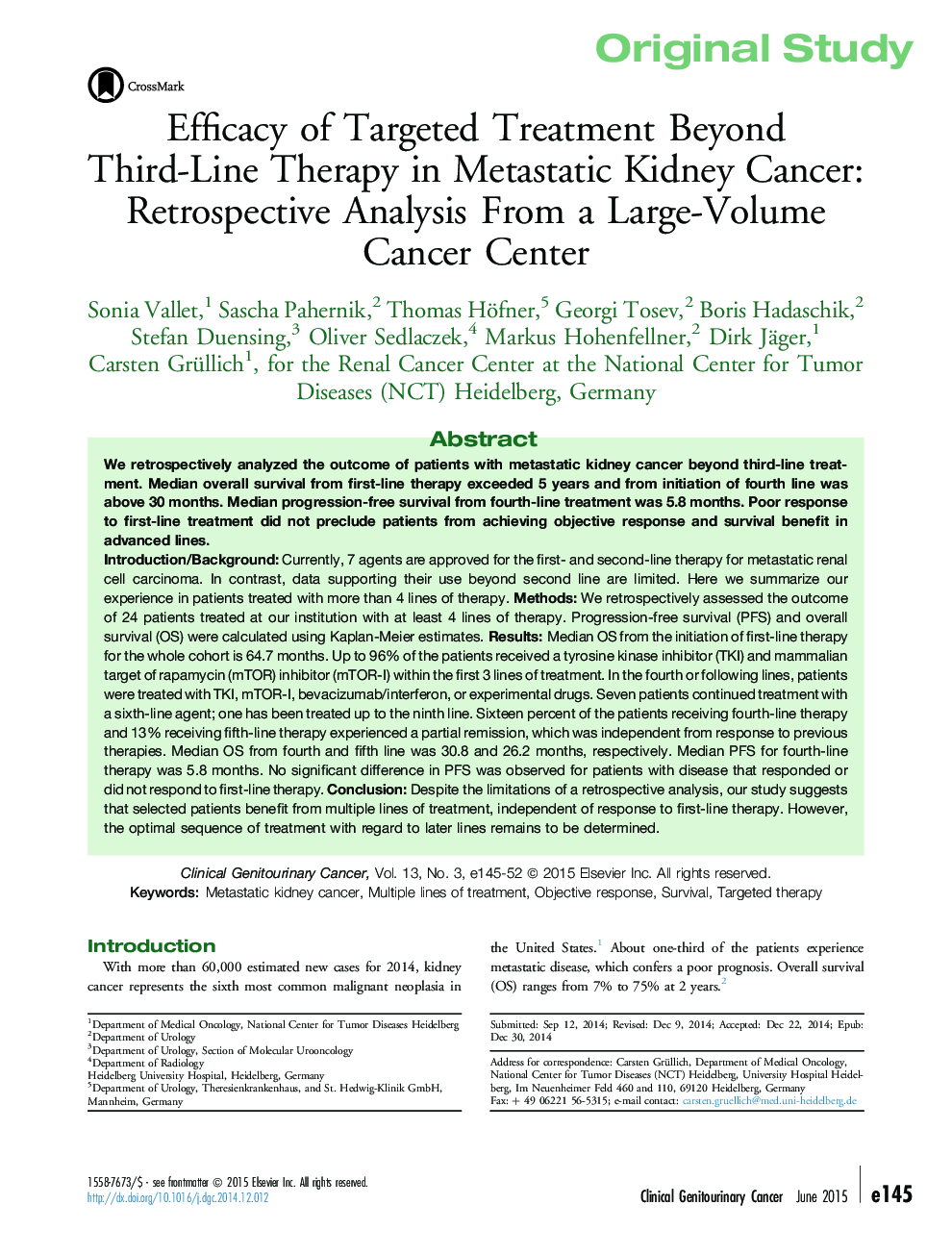| کد مقاله | کد نشریه | سال انتشار | مقاله انگلیسی | نسخه تمام متن |
|---|---|---|---|---|
| 2752058 | 1149540 | 2015 | 8 صفحه PDF | دانلود رایگان |
Introduction/BackgroundCurrently, 7 agents are approved for the first- and second-line therapy for metastatic renal cell carcinoma. In contrast, data supporting their use beyond second line are limited. Here we summarize our experience in patients treated with more than 4 lines of therapy.MethodsWe retrospectively assessed the outcome of 24 patients treated at our institution with at least 4 lines of therapy. Progression-free survival (PFS) and overall survival (OS) were calculated using Kaplan-Meier estimates.ResultsMedian OS from the initiation of first-line therapy for the whole cohort is 64.7 months. Up to 96% of the patients received a tyrosine kinase inhibitor (TKI) and mammalian target of rapamycin (mTOR) inhibitor (mTOR-I) within the first 3 lines of treatment. In the fourth or following lines, patients were treated with TKI, mTOR-I, bevacizumab/interferon, or experimental drugs. Seven patients continued treatment with a sixth-line agent; one has been treated up to the ninth line. Sixteen percent of the patients receiving fourth-line therapy and 13% receiving fifth-line therapy experienced a partial remission, which was independent from response to previous therapies. Median OS from fourth and fifth line was 30.8 and 26.2 months, respectively. Median PFS for fourth-line therapy was 5.8 months. No significant difference in PFS was observed for patients with disease that responded or did not respond to first-line therapy.ConclusionDespite the limitations of a retrospective analysis, our study suggests that selected patients benefit from multiple lines of treatment, independent of response to first-line therapy. However, the optimal sequence of treatment with regard to later lines remains to be determined.
Journal: Clinical Genitourinary Cancer - Volume 13, Issue 3, June 2015, Pages e145–e152
